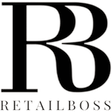The luxury handbag market is fueled by increasing disposable incomes among millennials and Gen Z, who view luxury handbags as both functional items and status symbols.. With an estimated value of $11.48 billion in 2024 and projected to reach $15.07 billion by 2030, this sector is experiencing a compound annual growth rate (CAGR) of 4.7% from 2025 to 2030, according to a recent report by Grand View Research.
Sustainability and Digital Transformation
Sustainability has become a key driver in the luxury handbag market. Brands are increasingly incorporating eco-friendly materials, such as plant-based leathers and recycled fabrics, to appeal to environmentally conscious consumers. Additionally, digital platforms have revolutionized how luxury handbags are marketed and sold. Social media influencers play a crucial role in promoting high-end brands, with 84% of Gen Z consumers purchasing luxury items after seeing them online.
Market Segments and Trends
Tote bags accounted for a significant share of the market in 2024, while satchels are expected to grow at a CAGR of 4.8% from 2025 to 2030, driven by their alignment with vintage and retro trends. The second-hand luxury market is also booming, with consumers increasingly viewing high-end handbags as investment pieces that can appreciate in value over time. Brands like Hermès and Chanel are leading this trend, with their iconic styles often selling for higher prices on resale platforms.
Gen Z and Millennials Drive Demand
Gen Z and millennials are driving the demand for luxury handbags, with many purchasing these items as status symbols and investments. Social media platforms have made it easier for younger generations to discover and purchase luxury goods, with 50% of Gen Z consumers looking to influencers for luxury trends, according to Klarna.
Challenges and Opportunities
Despite growth, the luxury handbag market faces challenges such as counterfeiting and supply chain disruptions. However, these challenges also present opportunities for innovation, particularly in digital authentication and sustainable production practices. Brands are leveraging blockchain technology to ensure authenticity and transparency, while also focusing on circular economy models to reduce waste.
Future Outlook
Looking ahead, the U.S. luxury handbag market will continue to evolve with technological advancements and shifting consumer preferences. As consumers increasingly prioritize sustainability and exclusivity, luxury brands must adapt by offering eco-friendly materials, personalized experiences, and digital engagement strategies.

















